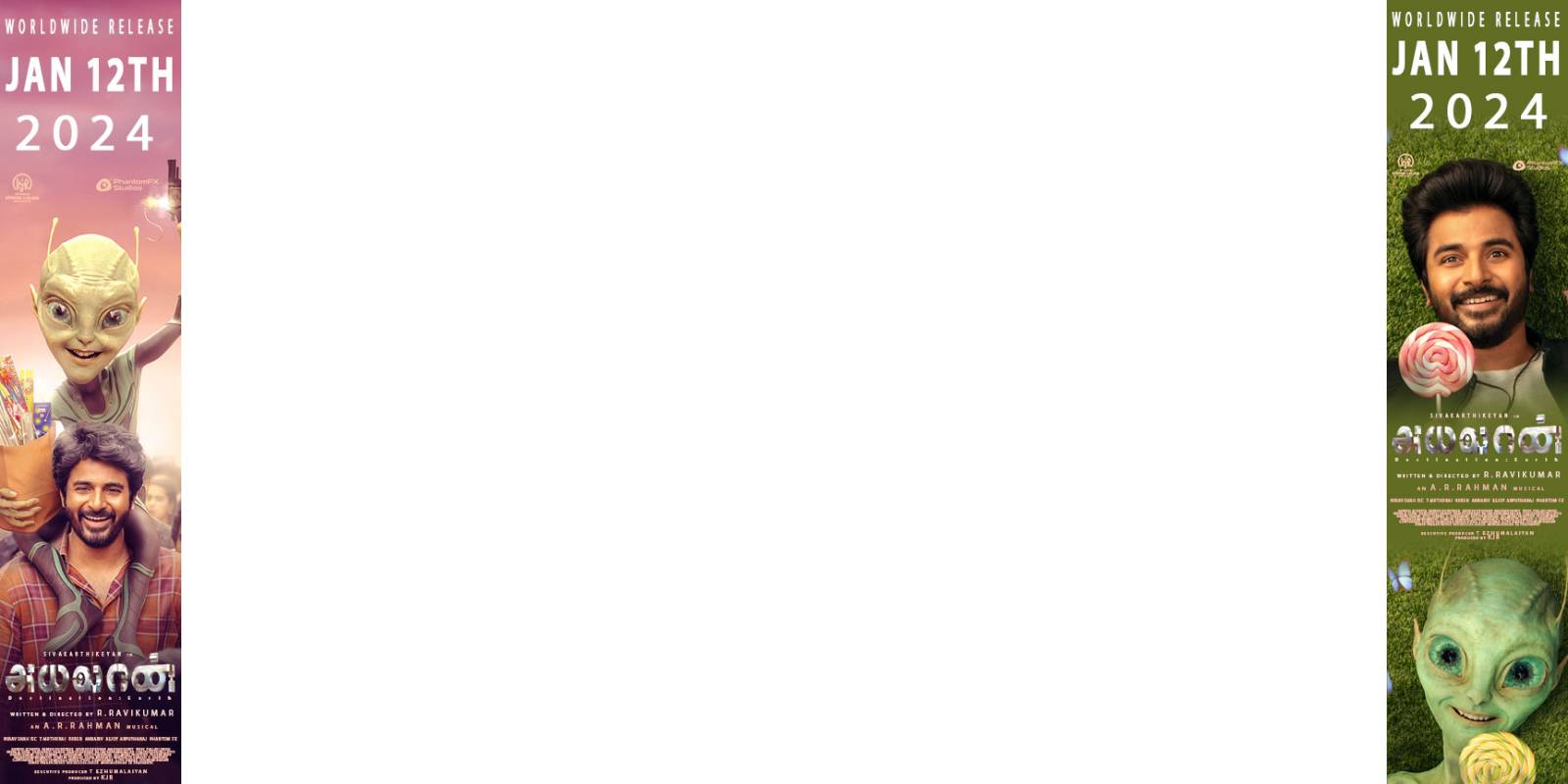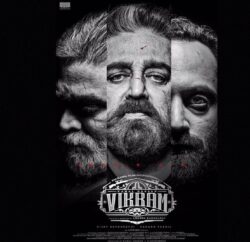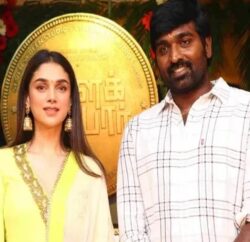 What is art? What makes art? There’s a definite science to it, but is that all? Then, why are few practitioners of art better than the others? One cannot deny the existence of something more — that’s intangible and makes art what it is. Name it what you want: soul, life, spirit, passion, talent, anything. But there’s no denying the fact it is there. Balaji embodies this ‘spirit’ in a wizened thespian, who is interestingly named, Ayya Aadhimoolam which in Tamil translates to ‘the crux’. And Seethakathi, his latest, ponders over what happens when that ‘soul’ leaves.
What is art? What makes art? There’s a definite science to it, but is that all? Then, why are few practitioners of art better than the others? One cannot deny the existence of something more — that’s intangible and makes art what it is. Name it what you want: soul, life, spirit, passion, talent, anything. But there’s no denying the fact it is there. Balaji embodies this ‘spirit’ in a wizened thespian, who is interestingly named, Ayya Aadhimoolam which in Tamil translates to ‘the crux’. And Seethakathi, his latest, ponders over what happens when that ‘soul’ leaves.
Seethakathi is a metaphysical experience, carefully crafted by Balaji. Each aspect of the film has several layers to it. For example, the first few minutes encapsulate the journey of Ayya, but in addition, it also shows the journey of performing art itself from a street play to a staged drama. This chapter ends with a stage play of Aurangzeb, that focuses on his final days where he abandons art. At the end of a metaphorical chat with music, Aurangazeb says that he is alone — but at the peak where all he can now see are the pits. At the beginning of the emotional monologue that follows, the camera is at the top. But it slowly begins its descent as Aurangzeb speaks, mirroring his words as he dissects his life. “I made history and now I have become history myself,” he proclaims before falling on his knees, bowing down to Him. The lines denote to Aurangzeb, but it could have easily been about the changing fortunes of Aadhimoolam or ‘stage dramas’. The cinematography is immersive as well. We are shown the entire play, performed splendidly, before the camera pans to a show sparse audience. Ironically, the next play we see is Sujatha’s Oonjal, which is about a succesful man who now lives in the has-beens. The character Aadhimoolam plays says he didn’t want the money his daughter offers, but rather test the trust she had in him, and she had passed that test by offering the money she had saved for her marriage. This again might have easily been about Aadhimoolam himself. All he wanted was to be of use to his family. Balaji blurs the lines between the meta and real to moving effect, hugely elevated with Govind Vasantha’s organic score and Sarasakanth TK’s roving camera.
 The performances are a huge part of why this meta-film works starting with Vijay Sethupathi, who in the brief time he gets as an aged thespian, powers the entire film. Even the promotional run-up to the film seems ironic now, considering that they had to publicise the film as Vijay Sethupathi’s 25th film, where he plays a part that appears for a mere 40 minutes. He might be caked in make-up but the measured body language and his eyes do all the talking; something I am going to call the ‘Ayya’ eyes. He sets the stage for some terrific performances that follow. The ‘Ayya’ eyes’ make an appearance later in Saravanan, Mohana and the rest of the members of Aadhimoolam’s drama troupe. It also helps to have performers like Mouli and Archana who bring several ounces of dignity to their emotions, even when they don’t have much to do.
The performances are a huge part of why this meta-film works starting with Vijay Sethupathi, who in the brief time he gets as an aged thespian, powers the entire film. Even the promotional run-up to the film seems ironic now, considering that they had to publicise the film as Vijay Sethupathi’s 25th film, where he plays a part that appears for a mere 40 minutes. He might be caked in make-up but the measured body language and his eyes do all the talking; something I am going to call the ‘Ayya’ eyes. He sets the stage for some terrific performances that follow. The ‘Ayya’ eyes’ make an appearance later in Saravanan, Mohana and the rest of the members of Aadhimoolam’s drama troupe. It also helps to have performers like Mouli and Archana who bring several ounces of dignity to their emotions, even when they don’t have much to do.
It is fascinating to watch the visual easter ‘eggs’ that Balaji places to suggest the perennial nature of art and also to indicate its sustenance. While a birds’ nest anywhere is a sign of inactivity, here they nest and flutter around in the drama auditorium as a sign of blooming bustle. It doesn’t stop there. Blinded by fame, the film where Saravanan loses his grip is titled ‘Meendum Meendum’, in a reference to the multiple takes he requires. The first film Ayya appears after intermission is titled ‘Aanavam’. The last film Ayya does is ‘Thalli Pogathey’ — all referring to the ‘adhimoolam’ of Seethakathi, that no practitioner of art should forget the soul that fuels his craft.
But Balaji does push it too far at several moments and that is Seethakathi’s Achilles heel. Both Saravanan and Dhanpal’s downfall (brilliant performances from Rajkumar and Sunil though) is fleshed beyond necessity, to the point where the characters (and us as well) say ‘Enough’. Was there a need to hold a media debate over the ‘death of cultural aesthetics’? Or dumb down a metaphorical debate to an actual lawsuit? The climax is a tad tepid for a film that is as philosophically layered as Seethakathi. The overt indulgence in making its point is probably the only thing that mars the experience that Seethakathi is.
While the rest of the world might see a direct reference to the veteran thespian, late Na Muthuswamy, the founder of Koothu-p-pattarai, in Seethakathi, I was reminded of the story of Jonathan Livingston Seagull. In the fable, Jonathan pushes the boundaries of flying for his breed by keeping at it despite the criticism he faced. Seagulls were supposed to live to eat, not to fly. While Jonathan wanted posterity to know that they could do what he did if they tried hard enough, all that reaches is a superstition-ised version of his story, peppered with incredulous rituals. Ironically, the story that is meant to inspire many and make the clan flourish, ends up pushing many away. Younger gulls stuck to the mundane routine because they ‘don’t have eyes like Jonathan’ and that’s what they thought mattered. Seethakathi is a similar fable that is a beautiful, intricate ode to the world of theatre in all its glory. Question its emotional core and rip it off its embellishments, the film loses all value. But there’s one thing that Balaji couldn’t have done it better. There is no better name to the film than ‘Seethakathi’.











